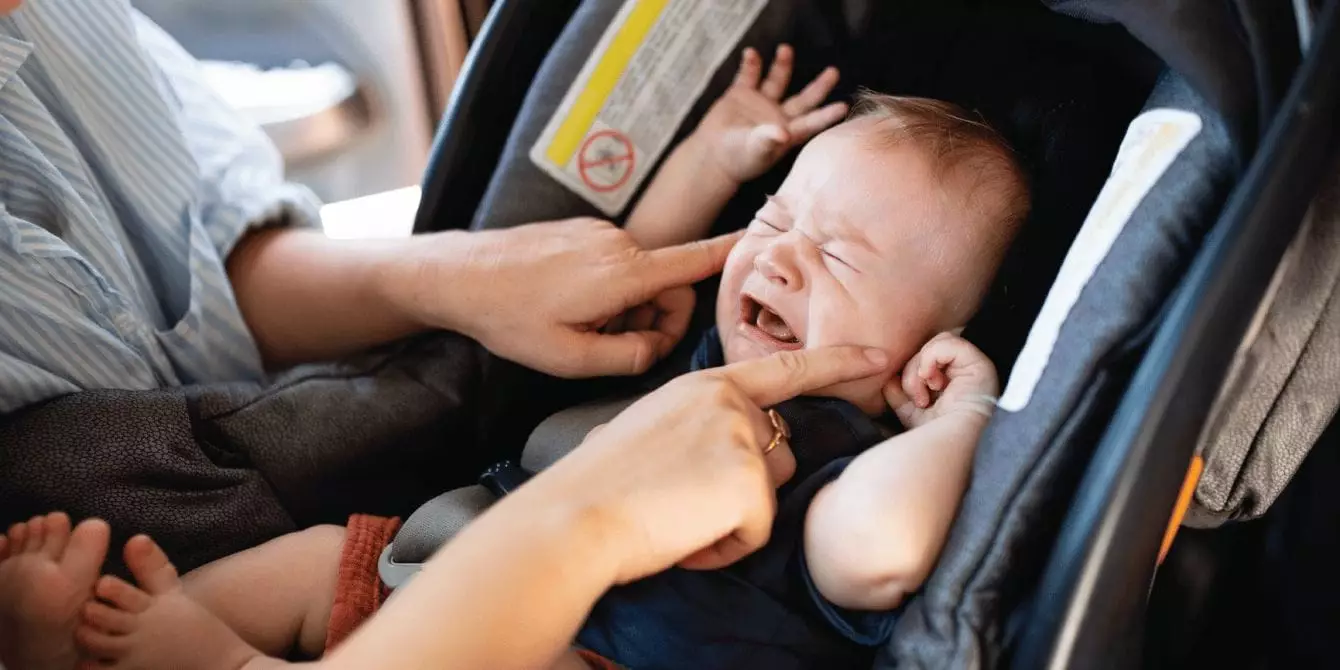The world of parenting is laced with countless challenges, but one of the most nerve-wracking experiences involves infants and car rides. While some babies seem to revel in the gentle hum of a moving vehicle, others react with cries that could put thunder to shame. If you’re a parent of the latter category, you may find trips markedly more stressful than they need to be. The emotional distress caused by a crying baby is not just a nuisance—it’s a significant concern that can affect driving safety and parental mental health. With panicked hearts and a rising stress level, parents often grapple with the question: How can we make car trips less tumultuous for both ourselves and our infants?
Research suggests that infants have a specific “separation distress cry,” which reflects their instinctual need for closeness and comfort from their caregivers. This cry activates a deep-seated response in parents, often leading them to experience feelings of anxiety, fear, and even sadness. Dr. Teri Mitchell, a pediatric expert, articulates the natural impulse that emerges upon hearing an infant’s cry—it’s a biological design intended to encourage caregivers to respond quickly and protectively, reinforcing the bond between parent and child.
Giving your baby a comfortable and reassuring environment in the car is essential. Ironically, the most significant discomfort for infants often comes from the very device meant to protect them: the car seat. A jarring adjustment to the straps or an unwelcoming position can set off an immediate bout of crying. To minimize discomfort, parents can explore solutions like the StrapsAway, which keeps the seat straps away while securing the baby. Such innovations make adjusting to the car seat less shocking for infants.
Moreover, familiarizing your infant with the car from an early age can foster an association of safety and comfort. Simple car rides around the neighborhood can incrementally ease a baby’s anxiety around car seats. Mariah M., a parent who dealt with this scenario, found that gentle acclimatization worked wonders for her son. By normalizing the experience, parents may gradually help their infants feel more at home while traveling.
The timing of your journey plays a pivotal role in setting the mood for the car ride. Traveling during your child’s natural sleep times can often lead to a smoother experience, as drowsy infants are more likely to doze off rather than scream for attention. Another important factor is temperature. Contrary to popular belief, babies often overheat in car seats rather than getting too cold. It is crucial to avoid bundling them up in heavy jackets while they are confined to their car seats. Instead, dress them in comfortable, breathable layers to ensure that they stay relaxed throughout the journey.
Parents across the globe have tested myriad methods to calm crying babies in the car, and some tools have gained widespread acclaim. For instance, researchers found that playing music can pacify infants significantly better than mere conversation. A carefully curated playlist of baby-friendly tracks or even a spontaneous sing-along can transform a tense atmosphere into a soothing one. Furthermore, using sound machines designed to emit calming “shushing” sounds can seem like magic. Many parents, like Jianmei N., have discovered that strategic timing, combined with a calming sound environment, led to quieter, more enjoyable rides.
Infants who experience reflux or gas issues are more likely to express discontent vocally during car rides. It’s important for parents to plan travel times accordingly—to allow infants ample time to digest before getting into the car. In these cases, communication with pediatricians can aid in managing such circumstances, as suggested by various parental anecdotes. Solving these problems can lead to a smoother experience for everyone involved.
For all the trials of traveling with a distressed child, it is essential to remember that this phase, like many aspects of parenting, is temporary. Many parents find solace in the fact that their infants eventually outgrow the need to cry during car rides. Emily G., who experienced significant distress with her third child, reassured herself that patience is key. For those currently navigating this challenge, staying positive and optimistic is crucial. It may feel overwhelming, but every mile traveled brings you a step closer to peaceful journeys.
While parenting is filled with hurdles, the distress of a crying infant in the car can be managed. Through proactive planning, seeking practical solutions, and maintaining patience, parents can foster an environment that promotes both safety and comfort within the confines of their vehicle. Remember that in time, even the most challenging phases will come to pass, often leading to peaceful car rides in the future.

